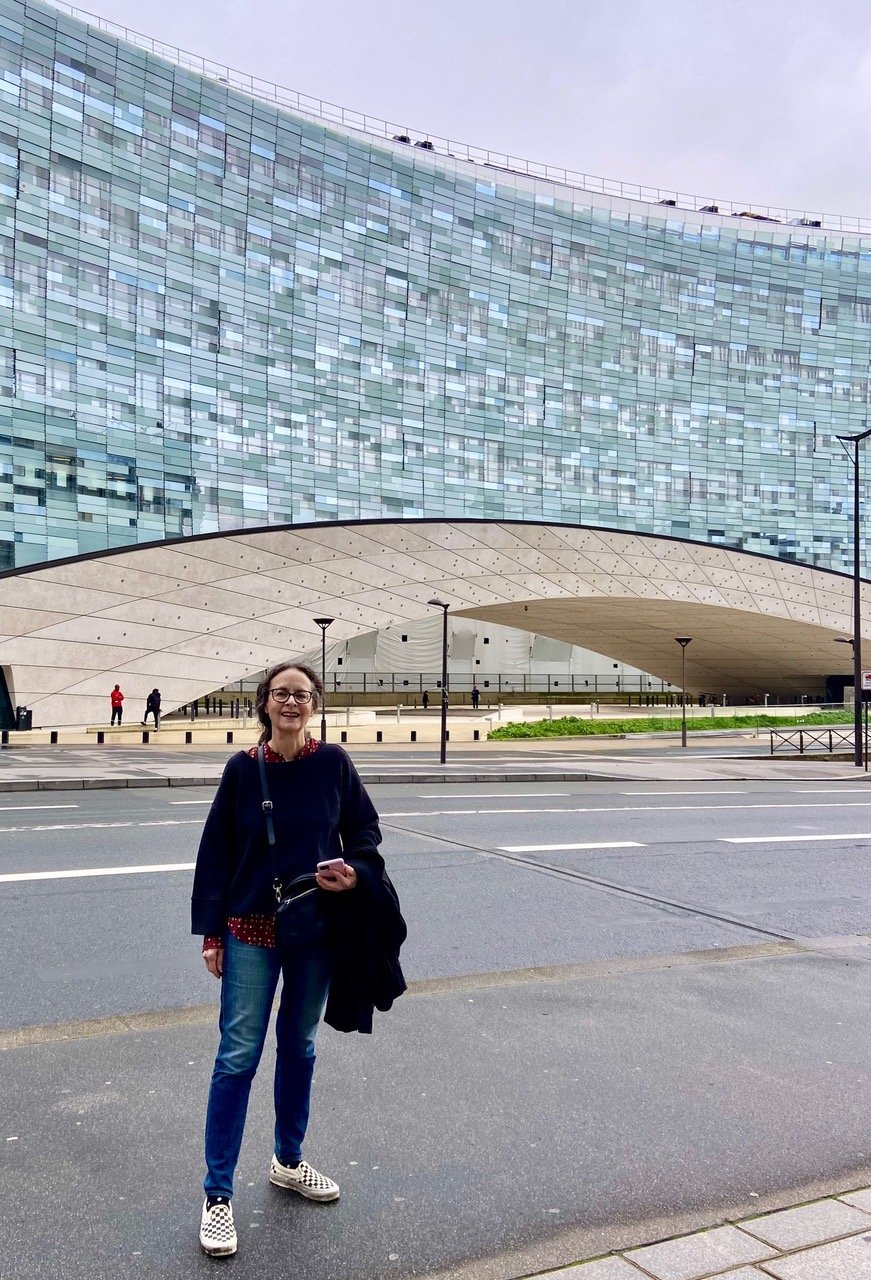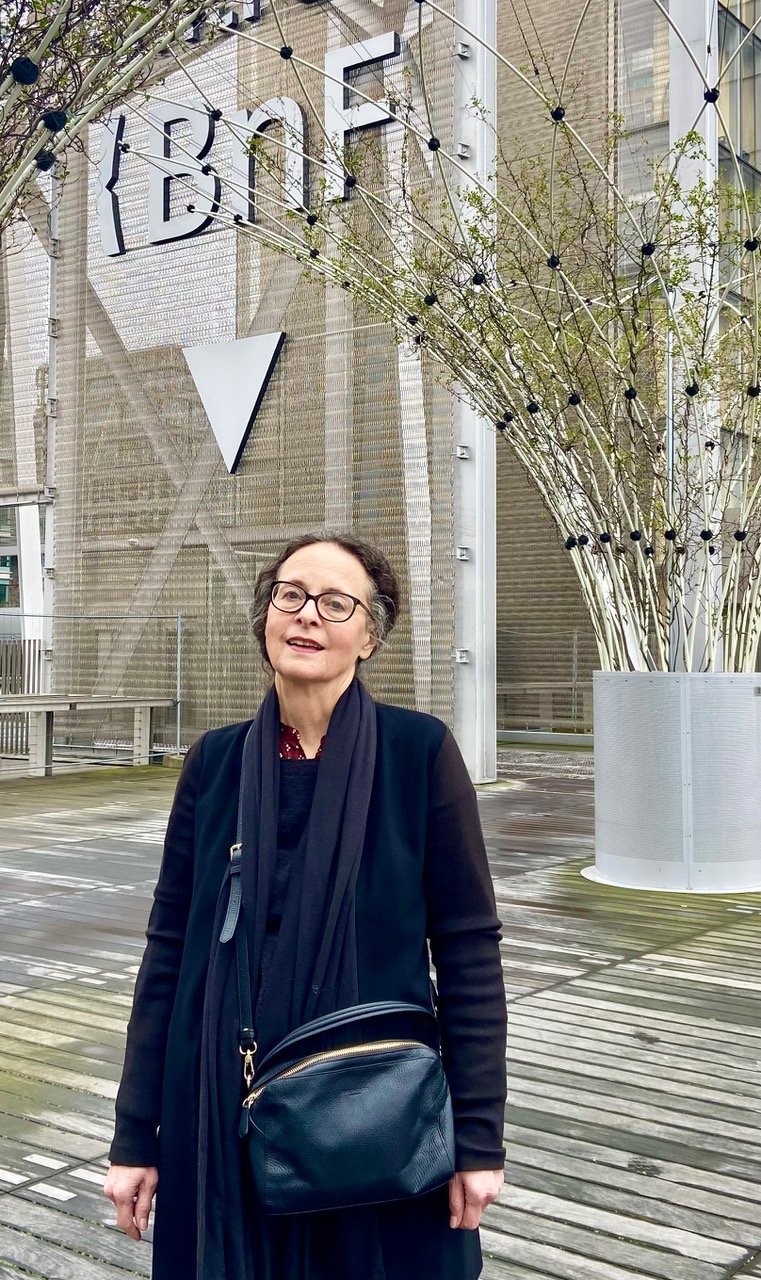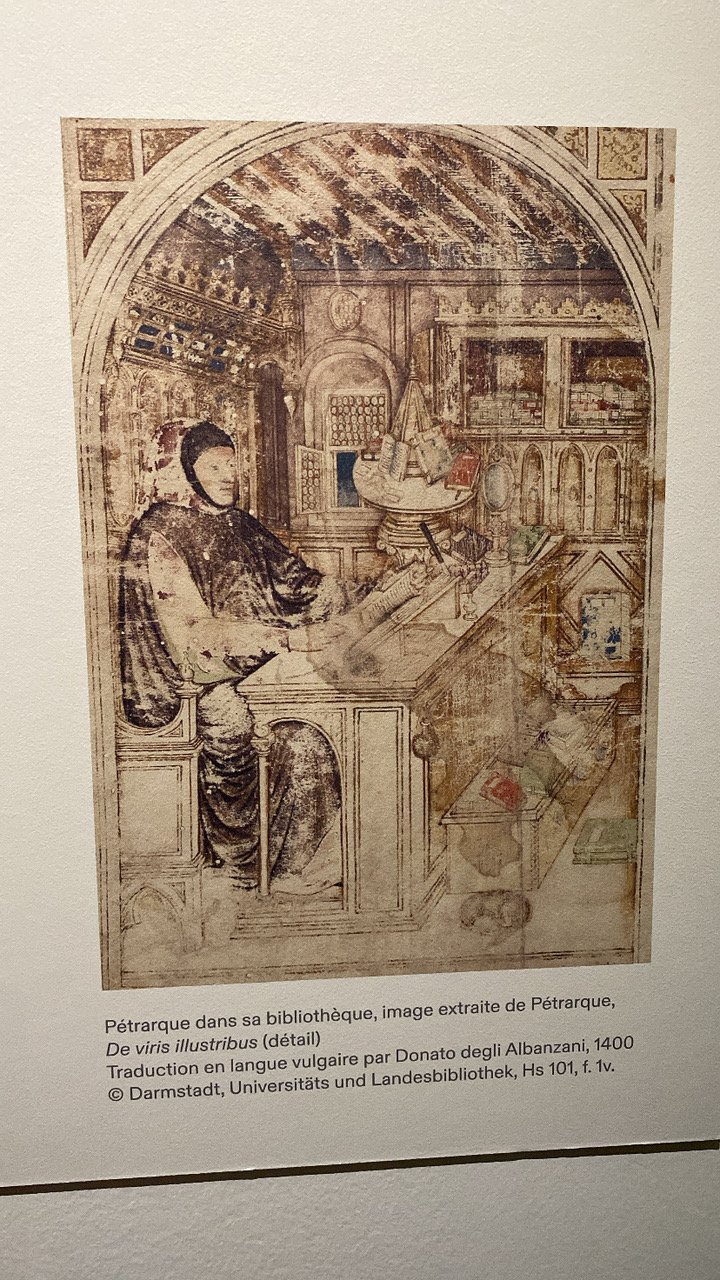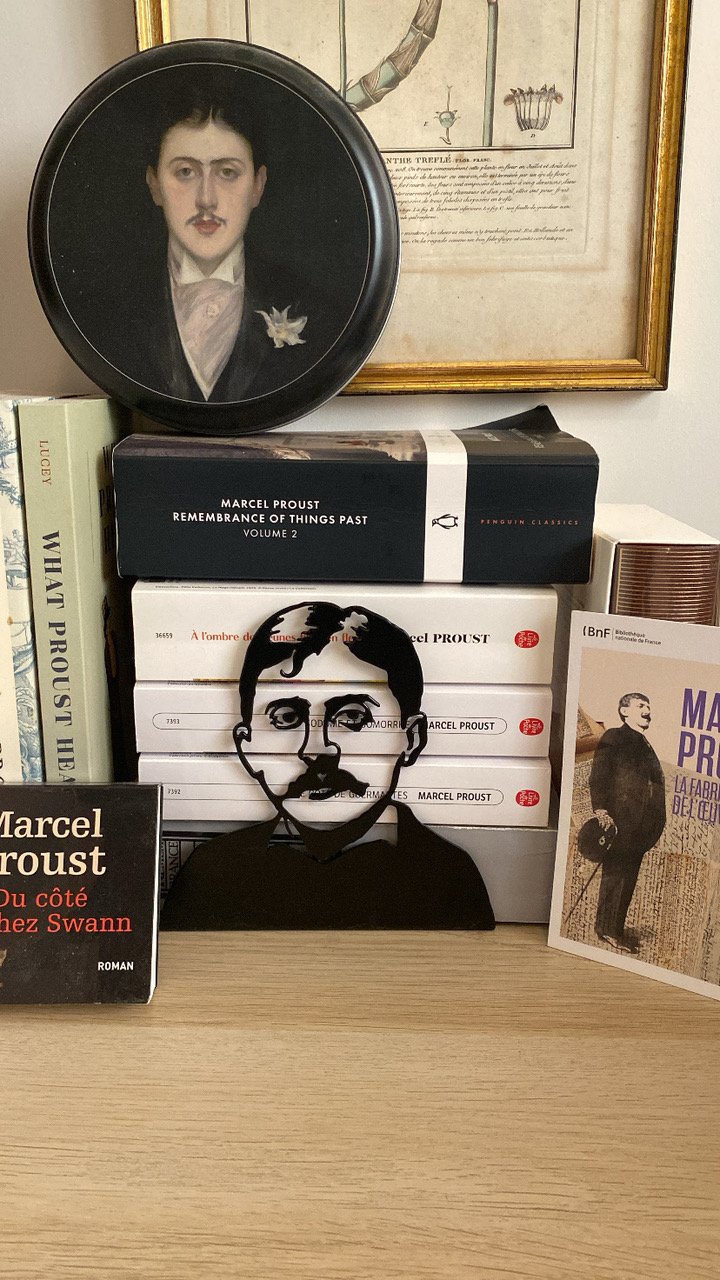From Studiolo to Studio: Confused? Keep reading!
Newsletter 04.07.2024
Bienvenue and welcome back to Musée Musings, your idiosyncratic guide to Paris and art. It’s been a busy week which thankfully didn’t require more than a couple metro trips. This week began in a cathedral dedicated to the written word for an exhibition celebrating Renaissance princes and scholars. (Fig 1) And concluded in a cathedral dedicated to modern art for an exhibition about an artist who celebrated the essence of his subjects and his materials. (Fig 2) En route, I made my way to three photography exhibitions, one at a museum I know well for an exhibition about a photographer I didn’t know at all. (Fig 3) And two more photography exhibitions at a spot I have often walked by but never walked into. One of the exhibitions was about a model who was, as the saying goes, ‘an artist in her own right’. The other exhibition was a sort of carte blanche given to the museum’s curators to find connections between the written word and the (mostly) anonymous photograph. And if that wasn’t enough (since it was me, it wasn’t), I heard Mozart’s Requiem at St. Louis en l’Ile, arriving just as the light rain (for which I didn’t need an umbrella) turned into a thunderstorm with bolts of lightening illuminating the church’s interior. At the concert’s conclusion, it was a sunlit sky that accompanied me home, thanks to Daylight Savings. Thanks so much to those of you who took time to write about my (finally, hopefully) signed compromis and my terrible, horrible, no good very bad day aka my marathon press junket in Normandie.
Figure 1. L’Invention de la Renaissance, l’Humaniste, Le Prince et l’Artiste, BnF
Figure 2. Bird in Flight, Constantin Brancusi, Centre Pompidou, against red background, like a priest’s vestments
Figure 3. Paolo Roversi exhibition poster, Palais Galliera
Let’s begin with Easter chocolates and Easter cakes. As I mentioned last week, for me praliné is fini! The chocolate to filling ratio is all wrong. Again, for me. I want to eat chocolate when I eat a chocolate, not a mouthful of nut paste enrobé/ed with a thin coating of chocolate. Which is why for Easter this year I bought a boîte of chocolate sardines from Alain Ducasse. (Fig 4) I am accustomed to Easter bunnies and chicks and eggs, so I wondered this year as I have wondered in years past, why the fish? Here are a few possibilities, the fish is how early Christians identified each other when it was dangerous to be a Christian. Or this, Jesus told his disciples to become fishers of men. Or maybe this, fish was the one meat permitted during Lent, which ends at Easter. Or maybe even this, it’s France after all. April Fool’s Day (April 1st) is Poisson d’Avril in France. And since Easter is usually near April 1st, chocolatiers make fish. In fact, big chocolate fish are often filled with ‘schools’ of smaller ones - strange when eggs and bunnies are almost always hollow.
Figure 4. Boîte à Sardines, milk & dark chocolate mix, Alain Ducasse
For years, I have answered the question, milk or dark with a question of my own, what percent cocoa. This time I had no choice, the boîte was 1/2 milk and 1/2 dark (45% and 75 % respectively). And guess what, the milk chocolate was fantastic, the ‘mouth feel,’ the meltability, the taste. Sometimes eating dark chocolate (85% for example) can seem like a punishment rather than a pleasure. With easy to eat milk chocolate, the pleasure may be guilty, but pleasure it is. Why guilty? Because milk chocolate has more sugar, more fat and less beneficial antioxidants, flavonoids. Guilty!
As for the Colombe de Pâques I bought at Pierre Hermé. (Figs 5, 6) Why a dove? In the Old Testament, the dove belongs to the story of Noah. Noah sends a dove to look for land after the flood. The dove returns with an olive branch, symbol of peace. In the New Testament, the dove represents the Holy Spirit in images of the Annunciation and Baptism. (Fig 7, 8) At Easter, the dove is a symbol of Christ’s resurrection. And the taste? I was expecting brioche, panettone. But it was richer, more like a light cake with small pieces of candied orange and chocolate. Perfect!
Figure 5. Colombe de Pâques, Pierre Hermé
Figure 6. Colombe de Pâques, either the head or the tail, sliced
Figure 7. Dive bombing Dove of the Holy Spirit hovering above Mary’s head
Figure 8. A much more ethereal dove hovering above Christ’s head in the Baptism by Piero della Francesca
Right, the exhibition, ‘L’invention de la Renaissance’ at the BnF (Bibliothèque nationale de France). When I decided to go, I didn’t think to check at which ‘branch’ the exhibition was being held. I just assumed it was at the library where I had seen exhibitions on Henri Cartier-Bresson and Marcel Proust. So, you can imagine my surprise when I got there and discovered that I was at the wrong library. Tant pis et tant mieux, the walk home was interesting even if the anticipated ‘intellectual engagement’ had not occurred. (Figs 9,10) I set out the next day for the correct library, which is closer to my flat, in a more interesting neighborhood and in a most beautiful building. Indeed, it’s the location most people think of when they think of the BnF, the Richelieu Library. (Figs 11, 12) The main entrance is on rue Richelieu, the modern entrance is on rue Vivienne, just a few doors down from the lovely Passage Vivienne. Why haven’t I been there since I moved to Paris? Only because it was closed for renovation for 12 years. It reopened less than a year ago and for some reason hasn’t been on my radar until now.
Figure 9. Me in front of BnF François Mitterand (the wrong BnF)
Figure 10. Me walking home from BnF François MItterand and happening upon this creature in an otherwise boring building
Figure 11. The correct BnF, BnF Richelieu
Figure 12. Me in the garden of the correct BnF, BnF Richelieu
According to the library’s website, the Richelieu library is, “the historic cradle of the National Library of France.” Cardinal Mazarin bought this palais in 1642, the same year he became Chief Minister for Louis XIII, a position he held during Louis XIV’s reign, too. For a few years, Mazarin was both the head of Louis XIV’s government and in charge of the young king’s education.
In the early 18th century, after both Mazarin and Louis XIV were gone, the the Palais Mazarin became the King’s library. Manuscripts, drawings, engravings, photographs and maps; coins, medals, antiques and jewelry are stored and displayed here. There are reading rooms for researchers and the breathtaking grand oval room, for everyone. (Fig 13) Now there’s a museum which includes the spectacular Mazarin Gallery with its painted walls, painted and stuccoed ceiling. (Fig 14) I will have to come back, between exhibitions, to see the gallery in its glory since the exhibition hid most of the walls and much of the ceiling.
Figure 13. Grand Oval Reading Room, BnF Richelieu
Figure 14. Mazarin Gallery, exhibition space, BnF Richelieu
The exhibition, ‘The Invention of the Renaissance,’ begins out of sequence, but in one of my favorite places - the Studiolo which could be found (and sometimes still are) in some of the most magnificent Italian Renaissance palazzi. The studiolo is a tiny room, filled with treasures, mostly hidden behind drawers of splendid marquetry. The inlaid designs offer clues as to what’s behind the drawers. The rooms were further adorned with paintings and miniatures, of allegorical, classical and historical scenes and figures. (Fig 15)
Figure 15. Federico da Montefeltro’s Studiolo from Palazzo Ducale, Gubbio (now at Met Museum Art, NYC)
This exhibition tells us that the studiolo is a legacy of medieval monastic life. Where small, private spaces were used for solitary reading and meditation. Virginia Woolfe would have approved. She said, as you’ll remember, that women need a room of their own (and some money). The humanist Petrarch (1304-1374) had such a study in his home near Padua, in Italy. (Figs 16, 17 ) A century later, studioli became all the rage among the Italian wealthy merchant and noble classes. The most famous studioli are two that I have visited, in Florence (Francesco de Medici’s) and in Urbino (Federico da Montefeltro’s). In New York, at the Metropolitan Museum, you can see, reassembled, the Duke of Urbino’s studiolo from Gubbio (see above, Fig. 15).
Figure 16. Petrarch in his Library
Figure 17. Profile portrait of Petrarch
The exhibition takes us to Frederico de Montefeltro’s studiolo in Urbino. We see inlaid woodwork hourglasses, geometric figures and musical scores. Allegories of the theological virtues and of the liberal arts (the first based upon designs by Botticelli, the second on designs by Mantegna). (Figs 18-21)
Figure 18. Francesco de Medici’s grand (mostly painted panels) Studiolo in Palazzo Vecchio, Florence
Figure 19. Federico de Montefeltro’s Studiolo in Urbino
Figure 20. Federico de Montefeltro’s Studiolo in Urbino, based upon designs by Botticelli
Figure 21. Federico di Montefeltro’s Studiolo , Palazzo Ducale, Urbino, one of door panels
The real beginning of this story is with Petrarch and the Birth of Humanism. While studying law in Bologna, Petrarch immersed himself in the writings of Cicero and Virgil. From 1326 to 1329, he traveled to the great monastic libraries of northern Europe, seeking manuscripts by Latin authors. Back at home with these precious texts, he analyzed them, compared them, annotated them and offered brief synopsis of each one of them.
We move next to the Florentine scholar, Poggio Bracciolini (1380-1459), another humanist who searched for ancient texts. He traveled throughout Europe, looking for works by Virgil, Cicero, Tacitus, Quintilian and Vitruvius. And Greek manuscripts, too.
After he found them, Bracciolini transcribed them and then translated them. First the Greek ones into Latin and then everything into the vernacular, beginning with Italian. Through many sumptuous volumes on display, we see how antiquity influenced the decorations of printed books with elements inspired by the antique with medallions and putti joining the vegetal scrollwork from the middle ages. (Figs 22, 23)
Figure 22. Display of Illustrious Men and Renaissance medals after the antique
Figure 23. Display of Illustrious Men and Renaissance medals after the antique
The study of classical authors led to an interest in illustrious figures. Once again, Petrarch showed the way with his collected biographies of Roman heroes (De viris illustribus). Federico di Montefeltro’s studiolo in Urbino, for example, had 28 portraits of illustrious figures (14 are still in Urbino, the other 14 are at the Louvre). (Figs 24-25)
Figure 24. Petrarch, De viris illustribus
Figure 25. Portrait of Plato from Federico di Montefeltro’s Studiolo in Palazzo Ducale, Urbino
The final section of the exhibition shows how Petrarch’s library provided a model for later libraries. By the 16th century, princely libraries were commonplace throughout Europe. And by the end of François I's reign (1547), the libraries of the French monarchs were the equivalent of the papal libraries in Rome.
Of course there was a book shop and of course you know who was waiting. (Fig 26)
Figure 26. Bookshop had a Proust bookend, how could I not?
A few days later, I went to see the new exhibition at the Palais Galleria. I walked there, it’s a little over an hour from my place, a pleasant hour stroll along the Seine. The exhibition is a retrospective on the career of fashion photographer, Paolo Roversi, (born 1947) who you maybe know as the photographer selected to take Kate Middleton’s 40th birthday portrait. (Fig. 27)
Figure 27. Official 40th birthday portraits of Kate Middleton, by Paolo Roversi
Roversi has lived in Paris since 1973. He grew up in Ravenna, Italy and perhaps his way of seeing and creating is linked to a childhood filled with mosaics. (Fig 28) In 1980, he encountered the Polaroid camera for the first time. It gave him a freedom he did not have before. Twenty eight years later, in 2008, digital technology opened another door.
Figure 28. Baptism of Christ, Baptistry, Ravenna, Italy
“My first lanterna magica (magic lantern),” says Roversi, “was my bedroom in Ravenna where the light coming through the shutters formed ghostly, mysterious figures on the ceiling and walls. Since then, my real lanterna magica has been my studio.” (FYI a magic lantern was an early type of projector - pictures on transparent glass plates with a light source, images projected on a wall, upside down).
He describes his collaborations with fashion designers this way: They write the score, he interprets it. Among the designers whose fashions he has photographed are Comme des Garçons, Yohji Yamamoto, Martin Margiela and Yves Saint Laurent,
Roversi’s photo shoots are performances. His models are not static, they interact with the camera. Thanks to the immediacy of the Polaroid at the end of the 20th century and digital technology today, Roversi “invent(s) a world of darkness and light. He makes figures appear or disappear, outlining the clothes with a ray of light, and letting the faces either dissolve into the darkness or melt into the whites.” He has always welcomed the unpredictable and enjoys playing with the random. Developing Polaroids are, according to Roversi, “chemical surprises.” For him,”The progress and developments in my work are born from accidents.”
For Paolo Roversi, each photograph is a portrait. For photo shoots, he creates an atmosphere as calm and private as possible, no decor, no props. He wants his subject to become the center of the world. He stands next to his camera, not behind it, to maintain eye contact with his model. For Roversi, the model's participation is part of the process of creating the image. Taken in daylight, with a very long exposure time, Roversi's portraits possess both an intensity and a form of evanescence, a sense of other worldliness. (Figs 29-38)
Figure 29. Model wearing Alexander McQueen dress
Figure 30. Model wearing Comme des Garçons dress
Figure 31. Model wearing Comme des Garçons dress
Figure 32. Model wearing Christian Dior dress
Figure 33. Model wearing iconic Christian Dior dress
Figure 34. For Christian Dior cosmetics ad
Figure 34a. Roversi’s notebook
Figure 35. A piece he did with textile artist Sheila Hicks (one of my dear friend Betty’s dear friends)
Figure 36. A few more examples of Roversi’s experimentation & genius
Figure 37. And a few more
Figure 38. Paolo Roversi self portrait with Polaroid, always slightly out of focus
Oh dear, I’ve run out of space! I’ll tell you about the two photography shows and the concert next time. And the otherworldly exhibition at the Centre Pompidou on the sculptor Constantin Brancusi. A photograph of him starting out on his journey from Bucharest to Paris in 1904 reminded me of an 1854 self portrait by Gustave Courbet. (Figs 39, 40)
Gros Bisous,
Dr. ‘B.’
Figure 39. Constatin Brâncuși in 1904, the year he walked from Bucharest to Paris
Figure 40. Bonjour Monsieur Courbet, Gustave Courbet, 1854
Thanks so much for your comments, they are always much, much appreciated.
New comment “It wasn’t a very good time for Hebrew”:
Beverly, I’m curious how the New Vessel Press knew to send YOU a review copy of Maya’s book. You certainly did a dedicated job or reading and re-reading it in order to say some thoughtful things about it. I read every word of what you say about it here. Thank you for sharing it. (I also feel for you in the very personal things you say about being a parent; I too am the parent of a son and a daughter, but a father rather than a mother, so my wife suffered the weight of parenting more than I did—she performed the bad-cop role, I the easier, good-cop role.) Morris, N. Carolina
So looking forward to reading The Hebrew Teacher...Thank you for your attention to it and for all of your wonderful "musings". Your column is a treat I savor each time. Best, Shirley
New Comment on Some Good Stuff, or what I’ve been up to lately:
Dr. Held Thank you for remembering the Careme Room at the late culinary school in San Francisco in this article. My daughter attended it when it was bustling and wonderful. I worried about what she would eat of all things and discovered the upper classes's food production was served in the student cafeteria. Good heavens!! Dining on the most exquisite dishes, she gained about 20 pounds but lost them in an externship at the Hotel Savoy in London where she worked away in the second basement kitchens and lived in a hostel. Thank you for all your research and bringing back memories. I was the 'starving parent' during that time..on a heavy budget to get her through school. Dianne, San Francisco
A belated Happy Birthday 🎉🎂🎁. Deedee, Baltimore
New comment Normandie Impressionniste or Beverly’s very (very) long press trip:
Thank you Beverly, I enjoyed your journey, and I imagined I was on the journey with you. Very envious of the paintings you saw. Melbourne is such a long way. Cheers Jennifer, Melbourne, Australia
Oh no. So sorry you were sick at the end of the day. I always carry peanut butter cheese crackers “ just in case” but, the trip did sound very interesting. Deedee, Baltimore









































